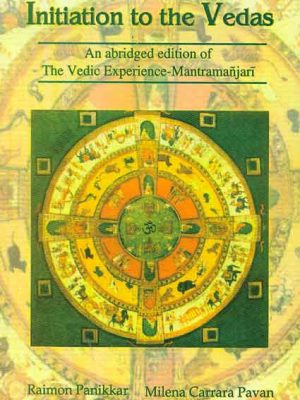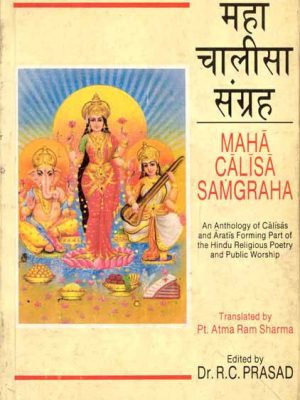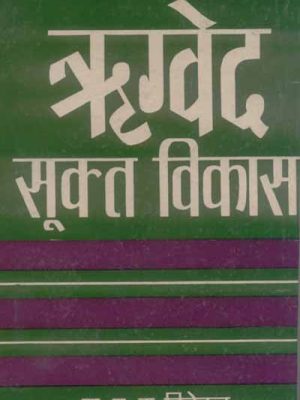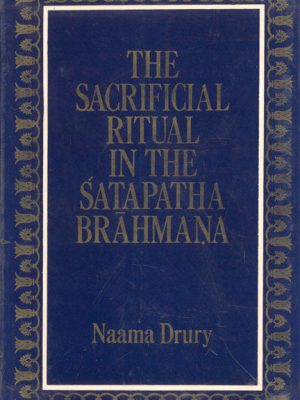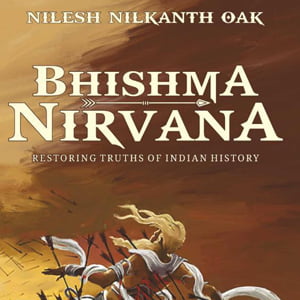Hinduism
-
Movements with the Cosmic Dancer: On Pilgrimage to Kailash Manasarovar
Movements with the Cosmic Dancer: On Pilgrimage to Kailash Manasarovar
Lakshmi Bandlamudi’s description of her journey to Kailash and Manasarover, representing as they do Purusha and Prakriti, the masculine and the feminine nature of existence, is deeply moving because she connects it to her own inner spiritual quest. Replete with mythical stories regarding Shiva and Parvati, and written with a special emphasis on the feminine, this book is a moving testament of a living faith which has persisted for thousands of years.
Lakshmi Bandlamudi’s script is a sublimely cosmic dance in itself hinting at a difficult life and a less than easy journey; she nonetheless describes her journey to Kailash the home of Shiva, as a transcendental pilgrimage of the soul. The story Tibetan territory she must traverse becomes almost irrelevant in her soul’s searching for answers to questions, which are both personal and universal.
Author
Lakshmi Bandlamudi
₹295.00 -
Initiation to the Vedas: An abridged edition of The Vedic Experience-Mantramanjari
Initiation to the Vedas: An abridged edition of The Vedic Experience-Mantramanjari
The hymns we find here are prayers. To be able to invocate, that is, to call upon something greater than ourselves and so break our own bounderies is the beginning of wisdom, the source of hope and the condition of joy.
About the Author(s)
RAIMON PANIKKAR was ordained as a Catholic priest and is Professor Emeritus of Religious Studies at the University of California, Santa Barbara. At present he lives in the mountains of Catalunya trying to learn the wisdom of life.
₹295.00 -
Maha Calisa Samgraha: An Anthology of Calisas and Aratis forming part of the Hindu
Maha Calisa Samgraha: An Anthology of Calisas and Aratis forming part of the Hindu
A Calisa is a 40-verse song dedicated to the many manifestations of Visnu and other powerful deities, such as the goddesses. It’s obvious that these are songs of devotion. introduction and notes to a significant source of reference on Hinduism. Maha Calisa Samgraha: An Anthology of Calisas and Aratis forming part of the Hindu
Author
₹295.00 -
Darsan
Darsan
The experience of the divine in India merges the three components of sight, performance, and sound. This book is about the power and importance of “seeing” in the Hindu religious tradition. In the Hindu view, not only must the gods keep their eyes open, but so must we, in order to make contact with them, to reap their blessings, and to know their secrets. When Hindus go to temple, their eyes meet the powerful, eternal gaze of the eyes of God. It is called Darsan, “Seeing” the divine image, and it is the single most common and significant element of Hindu worship. This book explores what darsan means. This is also a book about the divine image in the Hindu tradition. What do Hindus see in the images of the gods? What is meant by these multi-armed gods, with their various weapons, emblems, and animals? How are these images made and consecreted? How are they treated in a ritual context? In exploring the nature of the divine image, this book not only considers the images of the gods, but also the Hindu temple and the Hindu place of pilgrimage.
Author
DIANA L. ECK
₹295.00Darsan
₹295.00 -
-
The Book of Hindu Imagery: Gods and Their Symbols
The Book of Hindu Imagery: Gods and Their Symbols
Hinduism is more than a religion; it is a way of ife that has developed over approximately 5 milennia. Its rich and multicultured history, which has no equivalent among the great religions of the world, has made the structure of its mythical and philosophical principles into a highly
differentiated maze, of which total knowledge is a practical impossibility.
This volume cannot offer a complete survey of the meaning of Hinduism, but Eva Rudy Jansen does provide an extensive compilation of important deities and their divine manifestations, so that modern students can understand the significance of the Hindu pantheon.
To facilitate easy recognition, a survey of ritual gestures, postures, attires and attributes as well as an index are included. Over 100 illustrations and several photographs make this book an important
reference, both to the student of Hindu art and the interested amateur.
About the Author(s)
EVA RUDY JANSEN
₹295.00 -
Rigvedasukta Vikas
Rigvedasukta Vikas
Rigvedasukta Vikas it focuses emphasis on the social importance of this well-known Hindu text, the current study offers a fresh viewpoint on the Bhagavad-Gita, which is backed by research that was carried out in the past. The first section of this book offers a profound investigation of the ways in which reinterpretations of the Gita played a key part in the social history of India throughout the nineteenth and twentieth centuries. The illustrative material is comprised of five case studies pertaining to the following individuals: Raja Rammohun Roy, Swami Vivekananda, Bal Gangadhar Tilak, Aurobindo Ghose, and Mahatma Gandhi. In Part II, an explanation is given of how the social applications of the Gita are related with its most essential message for the present day, which is known as Loksamgraha and translates to “the good of society.” A contemporary meaning of the lokasamgraha-approach is the inculcation of societal ideals and a feeling of social duty in each person. Lokasamgraha is a Sanskrit phrase that appears in the Gita but not in the Upanishads.
About
₹295.00Rigvedasukta Vikas
₹295.00 -
Manas evam Gita: Lokmangal-Gunjita
Manas evam Gita***Lokmangal-Gunjita
Manas evam Gita: Lokmangal-Gunjita
Author
Dr. Satya P. Agarwal
About the Author(s)
Dr. Satya P. Agarwal is a Social Scientist. His academic honours include five gold medals and numerous merit scholarships and research fellowships at various universities. The Governor of the State of Maryland conferred upon him “The Governor’s Citation”, in recognition of his pioneering books as also his contribution to social service. He is author of several books besides the present one which are widely acclaimed and appreciated by the discerning readers. Other honours conferred on him include: (i) Kunti Goyal International Award, (ii) Special Award of Manas Sangam and (iii) International Tulasi Award.
₹295.00 -
The Religion of the Hindus
The Religion of the Hindus
The Religion of the Hindus concepts of samsara, which refer to the never-ending cycle of life, death, and rebirth, and karma are central to the Hindu worldview (the universal law of cause and effect). “Atman,” which translates to “soul,” is one of the most fundamental concepts in Hinduism. According to this school of thought, all living things possess a soul, and together, these souls make up the one, ultimate soul. The term “Hindu” is really an exonym, and despite the fact that Hinduism is considered to be the oldest religion in the world, many Hindu adherents refer to their faith as “Santana Dharma.” A Hindu classic reprinted. Essays about Hinduism and ritual by ardent Hindus. An intro.
Authored by
Kenneth W. Morgan
About the Author(s)
KENNETH W. MORGAN lived in Ramakrishna Mission Ashrams in India. He served
as Director of Chapel House and of the Found for the study of World
Religions. He became Professor of Religion, Emeritus, at Colgate University
in 1974.
₹295.00The Religion of the Hindus
₹295.00 -
-
Ramayana At A Glance
Ramayana At A Glance
The world is the stage on which the Lord played the part of Rama as the ideal son, brother, husband, step-son, and king. The story of Rama and Sita is verily the story of humanity. Sita, Rama’s devoted consort, enacted the role of the dutiful, chaste wife who cared for nothing but her beloved Rama. Lakshmana was the perfect brother, and Bharata and Shatrughna were exemplary in their devotion to their step-brother, Rama.
The next main character, Hanuman, is the embodiment of a surrendered devotee the pinnacle of Bhakti Yoga. The ten-headed Ravana, who plays the antagonistic role, symbolizes our ten senses (5 senses of knowledge and 5 senses of action). During the war, Rama beheads Ravana, which is characteristic of a yogi conquering the senses.
The characters in the Ramayana relate to our own human drama. The Ramayana teaches us a way of life. It shows how to have pure love among family members and toward society and gives us a
method to control the ten senses and the mind for inner peace and spiritual bliss.
Singing the LordÍs name on the gross plane can bring us to the transcendental level where sound manifests as pure energy. The name and form disintegrate in Pure Consciousness and ultimate peace is experienced. Repetition of the Lord’s name in the form of japa or kirtan will bring the transcendental, blissful experience attained by the great devotees and saints like Bhakta Mira
Bai, Tukaram, and in the present time, Sri Sant Keshavadas, Santji has followed the tradition of our great saints and devotees of the past and has now brought the story of the Ramayana for 20th century man.
₹345.00Ramayana At A Glance
₹345.00 -
Upanisads: (Selections from 108 Upanisads)
Upanisads: (Selections from 108 Upanisads)
Dr. TMP Mahadevan gives here an easy to read translation of selections from the 108 Upanisads. The eternal truths revealed so long ago are still valid today, and in this easy flowing style they provide moments of truth and enlightenment in the modern materialistic world in which we now live.
The first chapter introduces the reader to the back ground of the Upanisads and elucidates the underlying philosophy. A short introduction to each of the following chapters further explains their meaning. Many sayings, known and frequently used, will be found here in their original context.
Author
T.M.P. Mahadevan
₹345.00 -
-
The Sacrificial Ritual in the Satapatha Brahmana
The Sacrificial Ritual in the Satapatha Brahmana
The Sacrificial Ritual in the Satapatha Brahmana
Author
Naama Drury
₹350.00 -
The Origins of Virasaiva Sects: A TypologicaL Analysis of Ritual and Associational Patterns
The Origins of Virasaiva Sects: A TypologicaL Analysis of Ritual and Associational Patterns
An investigation of Virasavism is provided in the book Origins of the Virasaiva Sects. Already, the actions of founder and reformer Basava are well recognised throughout the whole of India and the rest of the globe. The Sunyasampadane, an important document from the evolution of Virasaivism in the third century, is investigated here. The subject of Virasaivism is investigated in great depth here. Already, the efforts of Virasaivism’s founder and reformer Basava are widely known across all of India, and some parts of Virasaivism’s reformation have garnered the attention of western research. The author delves into a crucial document known as the Sunyasampadane, which dates back to the formation of Virasaivism in the third century.
Author
R. Blake Michael
₹350.00 -
-
12209 BCE Rama Ravana Yuddha
Rama Ravana Yuddha
Valmiki Ramayana contains the history of one of the key events of Indian civilization, viz. The Rama-Ravana Yuddha. The Ramayana consists of nearly 24,000 Shloka, divided into seven Kandas and about 500 Sargas. Valmiki Ramayana has the status of the adi-kavya (first poem).
There are 15+ attempts to date the events of Ramayana. Unfortunately, the majority of these claims are based on either selective evidence or dogmas of AIT/Chatur-Yuga cycles and show characteristics lack of scientific acumen and logical reasoning. This is precisely the reason why researchers have ended up with multiple claims while simultaneously claiming to have employed identical evidence.
What could be the outcome if one can employ all the evidence of the Valmiki Ramayana and test it objectively with the help of science? Is it even possible to accomplish such a thing and arrive at a unified answer?
Nilesh Oak enumerated 575+ specific astronomy and associated observations from Valmiki Ramayana and tested them with the scientific acumen and logical reasoning to arrive at 12209 BCE as the year of the Rama-Ravana Yuddha. The book explores unique astronomy observations from Valmiki Ramayana that decisively falsify all existing claims for the year of the Rama-Ravana Yuddha, and thus the timing of Ramayana.₹361.1012209 BCE Rama Ravana Yuddha
₹361.10 -
Bhishma Nirvana
The book ‘When did the Mahabharata war Happen?: The Mystery of Arundhati’ decisively falsified all claims for the Mahabharata war that claimed the year of the Mahabharata war after 4508 BCE. Objective testing of the astronomy evidence (215+), internal to the Mahabharata text, led to 5561 BCE as the year of the Mahabharata war. Arundhati-Vasistha (AV) observation was decisive in falsification of 96%+ of the existing claims for the year of the Mahabharata war.
Many Indic researchers, lacking scientific acumen, comprehension, and logical reasoning skills, thought, incorrectly, that AV observation was the only observation that led to the falsification of all claims that fell after 4508 BCE. Naturally, they made illogical, dogmatic, evasive, digressive attacks on the validity of the inference due to AV observation. Their attempts to discredit AV observation backfired and rather led to further strengthening of AV observation and its importance for the validity of 5561 BCE as the year of the Mahabharata war. In their dogmatic zeal, these researchers even questioned the Mahabharata evidence itself that asserted the duration of Bhishma on the bed of arrows for more than 92 days.
What these researchers did not realize is that the very details of Bhishma Nirvana provide evidence that not only corroborates inference of AV observation but also strengthens 5561 BCE as the year of the Mahabharata war.
In this book, Nilesh Oak employs 300+ specific astronomy and associated observations from the Mahabharata text and tested them with the scientific acumen and logical reasoning to arrive at 5561 BCE as the year of the Mahabharata war. The book describes evidence that asserts the impossibility of the Mahabharata war anytime after 4700 BCE (Bhishma Nirvana + Lunar calendar evidence), or 5125 BCE (sensitivity analysis). The evidence presented in this book decisively falsifies all alternate claims for the year of the Mahabharata War.₹361.10Bhishma Nirvana
₹361.10 -
When Did The Mahabharata War Happen
The Mystery of Arundhati
The Mahabharata text contains the history of one of the key events of Indian civilization, viz. The Mahabharata War. The text is a rich depository of customs and culture, science and philosophy of the Mahabharata era. The Mahabharata is the longest epic poem known and consists of over 100,000 shloka and is roughly ten times the length of the Iliad and the Odyssey combined. The Indian tradition calls the text the Pancham (fifth) veda.
It is then natural that numerous attempts have been made to date the events of the Mahabharata war. There are more than 125+ claims, by those many different researchers, for the timing of the Mahabharata war. Unfortunately, majority of these claims are based on either selective evidence or dogmas of AIT/Kaliyuga and show characteristics lack of scientific acumen and logical reasoning. This is precisely the reason why researchers have ended up with 125+ different claims while simultaneously claiming to have employed identical evidence.
What could be the outcome if one can employ all the evidence of the Mahabharata text and test it objectively with the help of science? Is it even possible to accomplish such a thing and arrive at a unified answer?
Nilesh Oak enumerated 215+ specific astronomy and associated observations from the Mahabharata text and tested them with the scientific acumen and logical reasoning to arrive at 5561 BCE as the year of the Mahabharata war.
The book explores unique astronomy observations from the Mahabharata text that decisively falsify 96%+ of all existing claims for the year of the Mahabharata War.₹361.10 -
Vediki Prakriya: Shodhpurna Alochanatamak Vistrit Hindi Vyakhya
Vediki Prakriya: Shodhpurna Alochanatamak Vistrit Hindi Vyakhya
Vediki Prakriya: Shodhpurna Alochanatamak Vistrit Hindi Vyakhya
Author
Damodar Mehto
₹375.00

